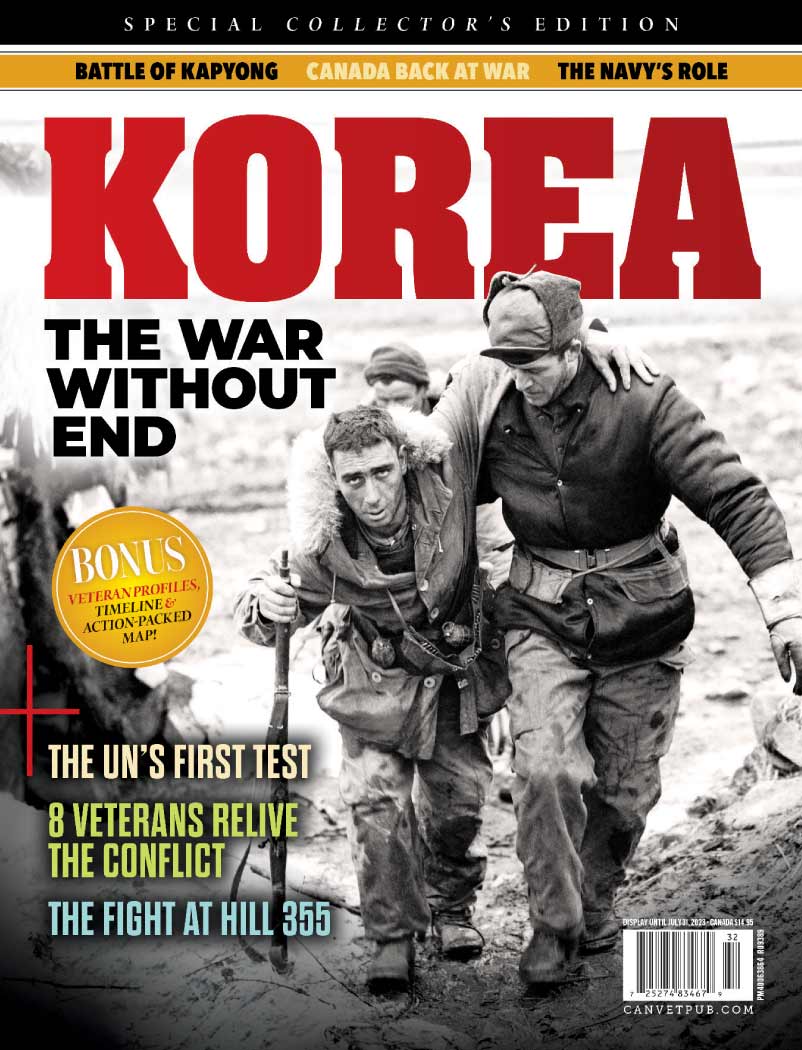
Communist troops of the North Korean People’s Army attack the South on June 25, 1950. They are in Seoul in less than a week. A United Nations coalition resolves to stop them. Canada joins what is by any definition a war. For three years, Canadians fight iconic battles on land, sea and in the air; 516 die and when the killing is over, the more than 26,000 survivors spend years fighting for recognition. They call it a “police action” and the “forgotten war,” but for those Canadians who fought in Korea between 1950 and 1953, neither time nor circumstance can erase the memories of what they saw, smelled and experienced in the hills and valleys around the 38th parallel and beyond.
The Second World War is over. Former allies are now enemies. An emerging Cold War turns hot on the Korean Peninsula after American and Soviet forces partition Korea and ideologies clash. The invasion by more than 75,000 Soviet-backed troops from the North is an early test of the newly formed United Nations.
Five years after history’s bloodiest conflict, no one wants war. Leaders insist the intervention in Korea will be brief. There is no formal declaration of war, yet 932,539 military personnel from 16 countries deploy to the peninsula over three years in one of the most destructive conflicts of modern times.
With the Soviet Union and China supplying materiel to the North, the fighting marks the first head-to-head confrontation between communism and U.S.-led forces of the free world. Canada forms a special force to fight in Korea. By early spring 1951, 8,500 Canadian troops are at war.
U.S. troops break out of Pusan and push north, driving the invaders back across the 38th parallel, then head into North Korea. Chinese troops respond for the first time, crossing the Yalu River and forcing UN troops back into the South. Seoul changes hands four times before the two sides settle into positions along the demarcation line. Canadian troops see their first action in mountainous terrain.
As the Chinese launch a spring offensive in 1951 in the Kapyong Valley leading to Seoul, 1,500 coalition troops are at the tip of the defensive spear: the 3rd Battalion, Royal Australian Regiment, and 2nd Battalion, Princess Patricia’s Canadian Light Infantry. They bear the brunt of the assault and stop 10,000-20,000 Chinese soldiers. It’s one of the war’s greatest and most pivotal battles.
Eight Canadian destroyers serve in waters off the Korean Peninsula during the war, blockading and escorting, evacuating trapped civilians and coalition troops, bombarding port facilities and shelling rail lines winding their way along the coast. UN ships destroy 28 trains; HMCS Crusader leads the way with four.
Canadians take up positions between hills 227 and 355, the latter the sector’s dominant peak known as Little Gibraltar. They face superior numbers of heavily armed and motivated Chinese troops who attack in waves behind heavy artillery strikes, often culminating in hand-to-hand combat. The Canadians hold the line.
Officialdom dubs it “the Korean conflict.” Three million people are dead. Negotiations to end the fighting take two years. There is no formal peace; it’s history’s longest negotiated armistice—a tense ceasefire. The war technically still exists. South Korea rebuilds and becomes an economic jewel of East Asia. An international pariah, North Korea languishes under cult-like leadership.